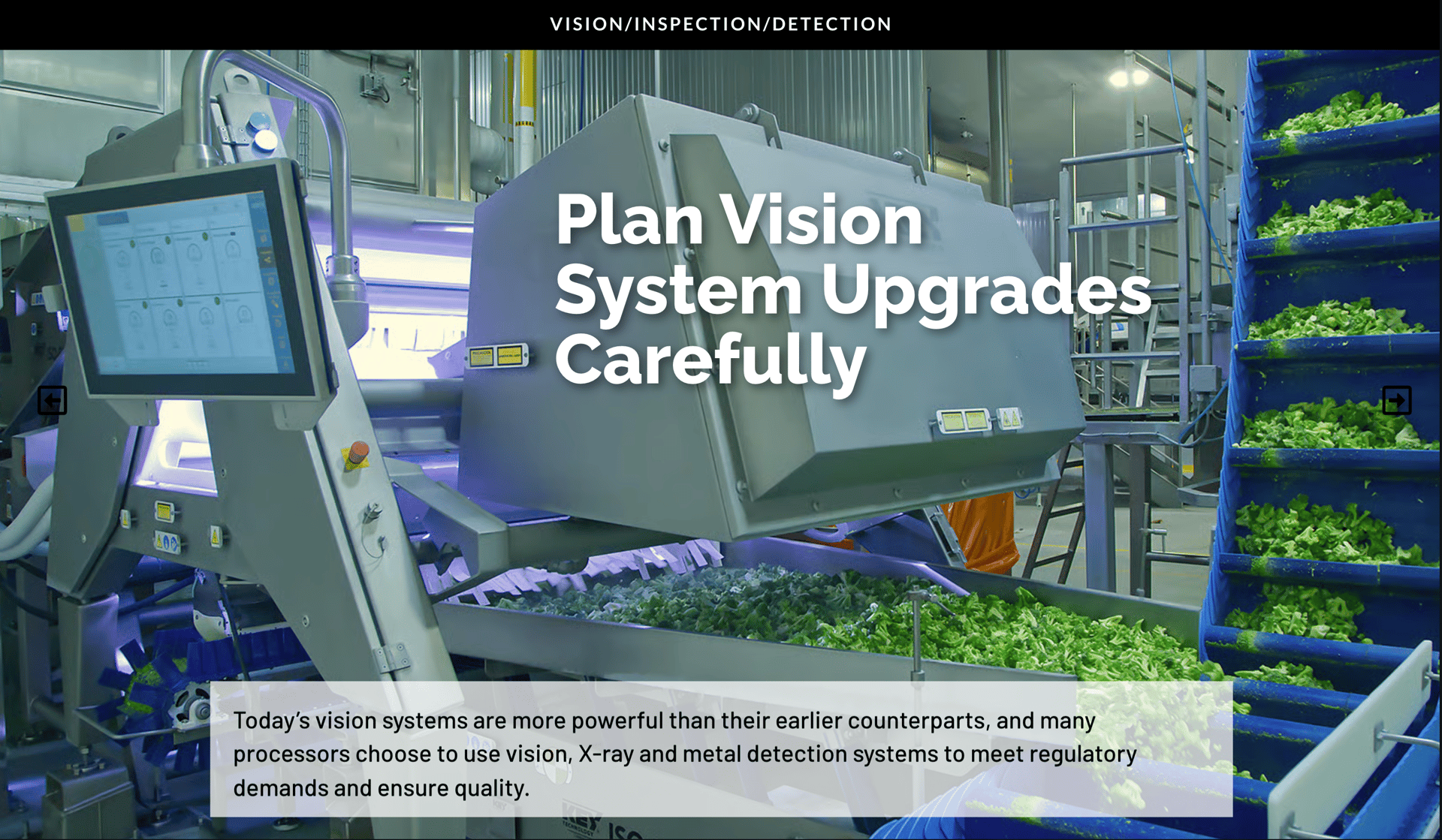FAbulous Food Plants
Opens Illinois Ice Cream Facility
Once the plant is fully operational, which will be as soon as next year, it will produce 15.5 million gallons of ice cream annually.
Tillamook
The Tillamook County Creamery Association (TCCA) recently opened a 68,000-sq.-ft. ice cream facility in Decatur, Ill. It is Tillamook’s first owned and operated plant outside of Oregon.
Tillamook sells more ice cream in the eastern U.S. than the western U.S., and it now has a facility closer to the eastern part of the country than Oregon. It is also able to source some ingredients from the Decatur area, including milk, which cannot be hauled for far distances.
The plant’s opening comes as Tillamook’s ice cream sales have increased, growing by 13% in 2024. The company also produces cheese, cream cheese and other dairy products.
“The Decatur plant is well-equipped to serve our valued customers with increased production capacity while driving supply chain efficiency from the plant to a growing footprint of national and regional retail outlets,” says Mike Bever, executive vice president and chief supply chain officer at TCCA.
Renovation
Before Tillamook could open the facility, it needed to update and modify the layout for its purposes, as the plant is over 100 years old. The facility had previously been owned by Prairie Farms, but it ceased operations there in 2022, according to local news reports.
Tillamook spent between $65,000 and $75,000 to renovate the plant, which included putting a steel structure underneath the concrete, adding changing areas for both men and women, and inserting stainless piping for its mix tanks. The renovation also included moving around some of the facility’s controls. Further, the company needed flash-freezing capabilities.
by Michael Levitt
Tillamook Country Creamery Association recently opened an ice cream manufacturing facility in Decatur, Ill. — its first facility outside of Oregon — to better serve the eastern U.S. Photo courtesy of Tillamook.
“Renovating a shuttered facility is not for the faint-of-heart,” says Nicole Bateman, president of Decatur’s Economic Development Council, which worked with Tillamook to get the facility operational.
“We knew it was going to be a little bit of a challenge, but it turned out to be OK,” adds Ruben Urrutia, director of plant operations for Tillamook’s Decatur facility.
The Ice Cream Process
The plant will produce three of Tillamook’s ice cream mixes: vanilla, chocolate and dark chocolate. The mixes consist of milk, eggs, cream, sugar and stabilizer. The stabilizer ensures the water crystals do not separate after freezing.
After the mix is created, flavors are added and it is moved to a continuous freezer barrel, where it is moved around and injected with air. Adding air makes the ice cream softer and creamier, helping its consistency. Then, the ice cream is pumped into a filler to add variegates.
Once all the ingredients have been added, the ice cream goes into a pasteurizer, which heats it above 185°F to kill any bacteria. Then it is sent to a homogenizer, where it is emulsified to spread the milk and cream throughout the mix. After, the ice cream goes to an aging tank for four to six hours so some fat molecules can be brought back and improve the ice cream’s consistency.
To legally be called ice cream, a product must have at least 10% butterfat content. Tillamook’s ice cream is around 13% butterfat, which is on the higher end of ice cream products. Eggs also add creaminess to Tillamook’s ice cream, serving as a natural emulsifier.
But because Tillamook’s ice cream is creamier than many similar products, the company had to ensure the facility’s equipment could handle the thicker mixes, requiring replacing some equipment.
Ice Cream Packaging
The plant also creates the packaging for Tillamook’s ice cream. A carton former wraps, rolls and attaches flat, poly-coated paper to turn it into a sealed ice cream carton, completing one carton every second. The facility also has a second carton-forming machine, so it can create 120 cartons per minute if needed. The carton lids are pre-made and added separately.
When the ice cream is filled into a carton, it has the consistency of soft-serve, but then it hardens to a firm shape when it sits in a freezer at -30°F for an hour and a half. Before it is put in the freezer, the ice cream runs through a metal detector to ensure it contains no foreign material, and it also goes over a scale to confirm it has the correct weight.
Mike Bever, left, EVP and chief supply chain officer, and CEO David Booth scoop ice cream during the grand opening ceremony for Tillamook’s manufacturing facility in Decatur, Ill. Photo courtesy of Tillamook
Getting Ready to Ship
Once the ice cream is done in the freezer, a shrink bubbler wraps six cartons together and sends them to a shrink oven to get put into a case.
After the ice cream is packed in a case, a worker will move the case to a pallet so that it does not shift while being transported across the country. Tillamook palletizes by hand, though it has plans to automate palletizing next year.
With every batch of ice cream that is created, Tillamook inspects several cartons every hour to verify that the ice cream is blended correctly, has the right number of mixtures or inclusions, and has a good spread of variegates. Tillamook tests the cartons by cutting them directly down the middle —) after they are frozen.
The ice cream filling machines at Tillamook’s Decatur facility are automated but monitored by human workers. Photo courtesy of Tillamook
Expansion
Once the plant is fully operational, it will produce 15.5 million gallons of ice cream annually, which could happen as soon as next year. However, the facility will produce 3 million gallons of ice cream in the first year while being operational for four 20-hour days per week.
Currently, the plant makes family-size and 3-gallon containers of ice cream, but it may make pints at some point, too. One difference in the production process between the family-size and 3-gallon containers is that the family-size ice cream goes into a spiral freezer, while the 3-gallon ice cream goes into a blast freezer.
The facility has already created 50 jobs in the Decatur area, with more to come as production ramps up. It also allows Tillamook to expand further if needed.
Tillamook makes ice cream cartons at its Decatur facility, with its forming machine making a new one every second. Photo courtesy of Tillamook
Joining a Community
Tillamook is doing more to help the Decatur area than simply opening an ice cream plant. The company has donated $50,000 to various community organizations, including the Decatur Park District, Macon County Fair and Good Samaritan Inn.
“Decatur isn’t just where we are making more ice cream — it’s where we’re building new community partnerships, supporting revitalization and laying the groundwork for future growth,” says David Booth, president and CEO of TCCA.
“The support that Decatur has given the Tillamook team here has been wonderful, so just to continue in that relationship, with the hospitality that everyone’s shown us, and then to show all the folks that are coming on-site here to join the Tillamook team,” Urrutia adds.
According to Bever, Tillamook did not want to be just another company that operated in Decatur. “We wanted to be part of the fabric of Decatur,” he says. FE



